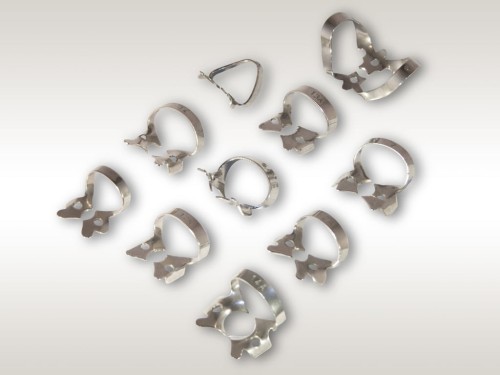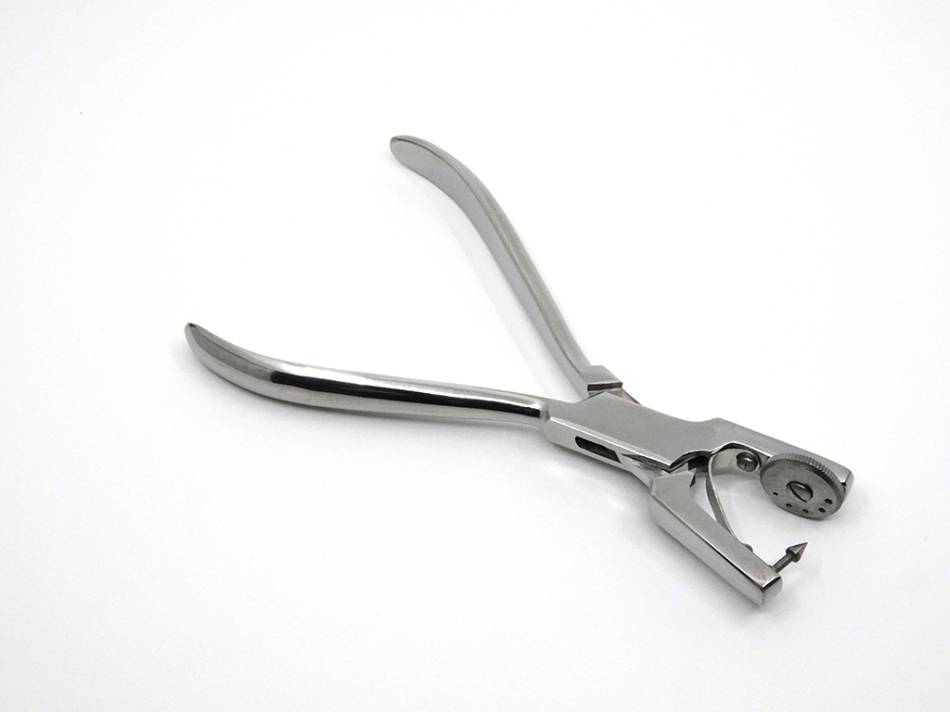
Most Popular
 Importance of Anti-Fog Solutions in Dental Care and Dentistry
Importance of Anti-Fog Solutions in Dental Care and Dentistry
Dentistry is a broad term, where minor tools, equipment range, ...
 Rubber Dam Clamp Placement and Its Uses
Rubber Dam Clamp Placement and Its Uses
Rubber dam clamp placement is a crucial technique in dentistry, ...
How Denture Gum Abrasion Affects Oral Health: Exploring the Impact
Denture gum abrasion, a common issue among denture wearers, can ...



Essential Steps in Rubber Dam Clamp Placement

Rubber dam clamp placement is a crucial aspect of the rubber dam technique in dentistry. A rubber dam clamp is a dental instrument used to anchor and secure the rubber dam around a specific tooth during dental procedures. The placement of the clamp is essential for achieving effective isolation and maintaining a dry working environment.
The rubber dam clamp is selected based on the tooth being treated and its anatomical features. Dentists choose from a variety of clamp designs, each tailored to fit specific teeth in both the upper and lower jaws. The clamp is positioned around the tooth, gripping the rubber dam securely in place and ensuring that it covers the targeted area without impeding access to the treatment site.
These dental instruments are typically made of stainless steel, offering durability and corrosion resistance. They come in various shapes and sizes to accommodate the diversity of tooth shapes and positions in the oral cavity. The design of the clamp includes features such as wings, bows, and jaws, allowing for a customized fit around different teeth.
Rubber dam clamps play a pivotal role in the success of procedures such as restorations, endodontic treatments, and other dental interventions requiring isolation. Proper placement of the clamp not only ensures the stability of the rubber dam but also contributes to the overall efficiency and precision of the dental procedure.
In addition to rubber dam clamps, various other dental instruments are used in conjunction with the rubber dam technique. These instruments include rubber dam forceps, frame holders, and punches. Rubber dam forceps are employed to grasp and manipulate the rubber dam during placement, facilitating accurate positioning. Frame holders are used to support and stabilize the rubber dam frame, which holds the stretched dam in place around the teeth. Rubber dam punches create perforations in the dam, allowing for the placement of the clamp and ensuring a secure fit.
The combination of these instruments in rubber dam placement enhances infection control, maintains a clean and dry operating field, and ultimately contributes to the success of dental treatments. Dentists skillfully utilize these tools to create a controlled environment, optimizing conditions for precision and efficiency in various dental procedures.
What is rubber dam placement?
Rubber dam placement is a dental procedure involving the careful positioning of a thin sheet of latex or silicone around a tooth or group of teeth, isolating them from the rest of the oral environment. This technique aids in maintaining a dry and isolated field during various dental procedures, enhancing visibility and preventing contamination.
Which rubber dam clamp for which tooth?
Choosing the appropriate rubber dam clamp for a specific tooth is crucial in achieving effective isolation. Dentists meticulously select the clamp based on tooth anatomy and location, ensuring a secure and stable placement to facilitate precise dental work.
What is the purpose of a rubber clamp?
The purpose of a rubber dam extends beyond isolation; it serves as a protective barrier, preventing contamination from saliva and blood during dental procedures. This isolation enhances infection control, contributing to a sterile and controlled environment for dental interventions.
Why place a rubber dam by dentist
Dentists opt to place a rubber dam for numerous reasons, primarily to create a sterile field, improve visibility, and enhance treatment accuracy. By isolating the operative area, dentists can focus on the specific tooth or teeth requiring attention without interference from moisture or other oral contaminants.
How does a rubber dam work?
The functionality of a rubber dam lies in its ability to create an isolated and dry operating field. The thin, flexible sheet covers the teeth, providing a barrier against saliva, blood, and other contaminants. This isolation ensures optimal conditions for various dental procedures, such as restorations, endodontic treatments, and cosmetic interventions.
What is the advantage of rubber dam?
The advantages of using a rubber dam in dentistry are multifaceted. It significantly reduces the risk of infection by preventing the ingress of saliva and bacteria, enhances treatment precision by maintaining a dry field, and promotes patient safety by minimizing the chances of accidental ingestion or aspiration of dental materials.
What is the disadvantage of rubber dam?
However, the use of a rubber dam comes with certain disadvantages. Patients may find it uncomfortable or claustrophobic, and some dentists may experience challenges in placement, particularly in cases with limited access or difficult anatomical considerations. Additionally, allergic reactions to latex can pose a concern, necessitating alternative materials for certain individuals.
What is the life of rubber dam?
The lifespan of a rubber dam depends on factors such as frequency of use, proper care, and the materials used in its construction. Regular inspection and replacement are essential to ensure the integrity of the dam, preventing tears or deterioration that could compromise its effectiveness during dental procedures.
What are the limitations of rubber dam?
Despite its benefits, the rubber dam has limitations. Its application may be challenging in patients with certain medical conditions or those who experience severe anxiety. Additionally, in cases where absolute isolation is not required, or when working on multiple teeth simultaneously, alternative isolation methods may be preferred.
How is rubber dam made?
Rubber dams are typically manufactured from latex or silicone. The production process involves molding the material into thin, flexible sheets that can be easily stretched and applied to the teeth. Quality control measures are implemented to ensure the durability and safety of the rubber dam, meeting the stringent requirements of dental practices worldwide.
What is the purpose of a rubber dam clamp in dentistry?
A rubber dam clamp is a dental instrument designed to secure and anchor the rubber dam during procedures, facilitating isolation of the treatment area. It ensures a clean, dry, and controlled environment for various dental interventions.
How do I choose the right rubber dam clamp for a specific tooth?
The selection of a rubber dam clamp is based on the tooth's anatomy and position. Dentists consider factors such as tooth size, location, and shape when choosing from the variety of available clamp designs to achieve optimal isolation.
Are there alternatives to stainless steel rubber dam clamps?
While stainless steel is a common material for rubber dam clamps due to its durability, other materials like non-latex options (e.g., silicone) are available for individuals with latex allergies. Dentists can discuss suitable alternatives based on patient needs.
Do rubber dam dental instruments require special care and maintenance?
Yes, proper care is essential to maintain the longevity and effectiveness of rubber dam dental instruments. Regular cleaning, sterilization, and inspection for any signs of wear or damage are recommended to ensure reliable performance during dental procedures.
Can rubber dam dental instruments be used for pediatric patients?
Rubber dam instruments, including appropriately sized clamps, can be adapted for pediatric dental procedures. However, the dentist may choose instruments that are smaller in size and more suitable for the unique anatomical features of children's teeth to ensure a comfortable and effective experience.